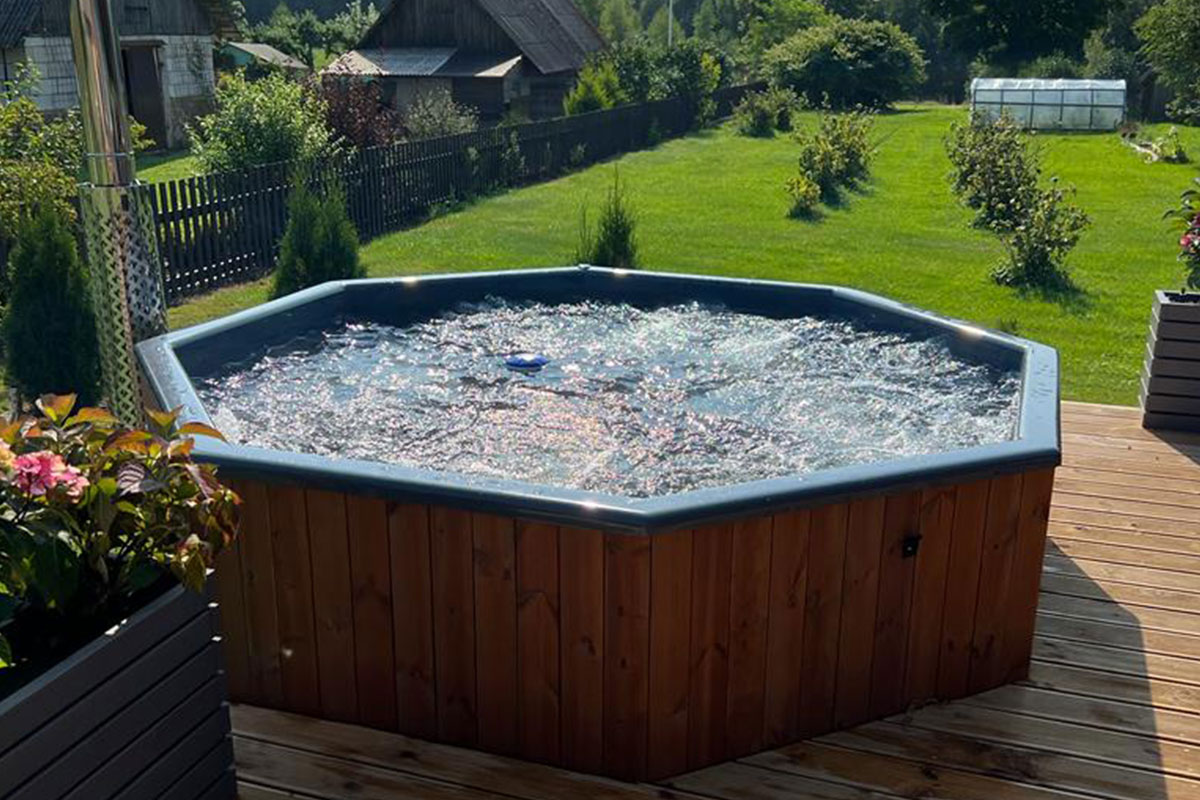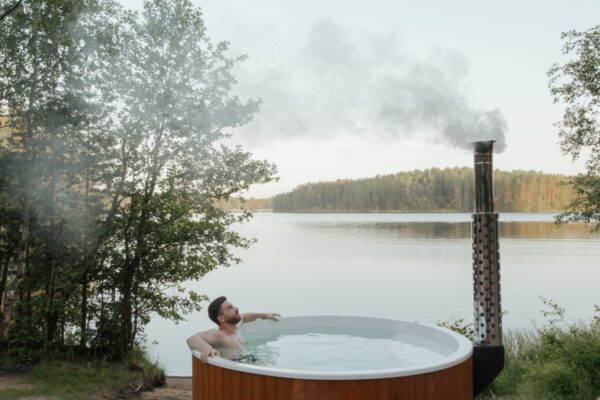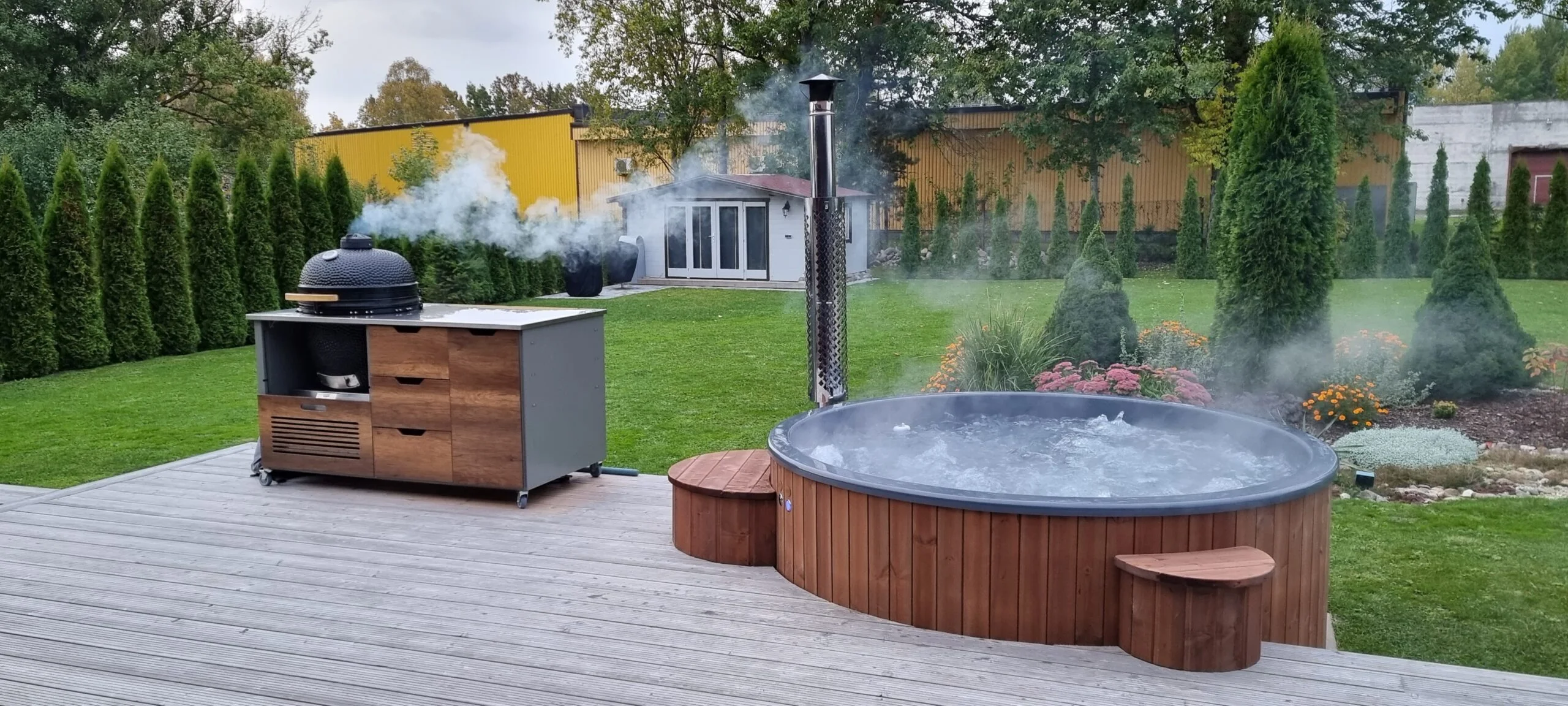Do you want to relax and unwind like a boss after a hard day’s work? Well, frequent hot tub bathing may seem like a luxury, but there’s a growing body of clinical evidence proving the health benefits of regular hot tub bathing.
That’s largely because (much like sauna bathing) a hot hub will increase the body’s core temperature, which has some pretty profound effects on your body.
Are there Health Benefits to a Hot tub?
Yes! There are plenty of hot tub health benefits. Regular bathers can expect improved circulation, better sleep, and many other benefits besides. We reveal some of the amazing reasons, you should jump in a tub every day to improve your health:
- Anxiety and stress relief – It’s a great way to unwind, but regular use has also been linked to reducing symptoms of depression.
- Improved sleep – Hot bathing has been shown to improve the length and quality of sleep
- Pain relief – The pain relief provided by hot tubs may only be short term, but it can provide a welcome relief to those who suffer from chronic conditions.
- Weight loss – Amazing, right?! We could hardly believe it either, but when combined with a healthy lifestyle and diet, hot tub bathing helps your body burn extra calories and aids weight loss
- It can lower blood pressure and improve heart health – Many studies have now proven that hot water immersion has a robust positive effect on vascular function and blood pressure.
- Aids diabetes management – Many studies are now showing that regular thermal therapy (either with a hot tub or sauna) can improve impaired insulin sensitivity.
- Muscle relaxation and improved range of motion – For anyone who enjoys getting their sweat on, you’ll know the importance of muscle recovery. Hot tub bathing is the perfect way to wind down post-workout as it helps relax sore muscles, but keeps your core temperature elevated.
We deep-dive into each of these below.
You’ll also be pleased to know that home hot tubs are surprisingly affordable to buy and maintain; and the list of hot tub health benefits is pretty incredible.
There are several clinically proven health benefits of hot tub bathing regularly.

Anxiety and Stress relief
Whilst it may seem like an obvious benefit, stress relief has been underrated by too many generations in the past. Many studies have shown that stress can have a profound impact on the body, affecting nearly every system and contributing to the development of psychological and physiological disorders and diseases. With more and more people waking up to the serious nature of mental health issues, taking time out to have a mindful moment in a hot tub is a really great way to ease any tension that’s built up throughout the day or week, it’s so effective that it can even reduce symptoms of depression. The soothing effect of the warm water is enough to help anyone find a brief escape from their busy everyday life. It’s particularly effective when combined with a bubble system and/or jets.
If you’re lucky enough to own an outdoor hot tub at home, then you’ll get the added benefits of enjoying the fresh air, and maybe even the sound of a fire crackling if you’re using a wood-burning heater. We’d recommend boosting your experience with the use of aromatherapy, soft music, candles or maybe even indulging in your favourite book.

Improved sleep
This takes us perfectly onto the next benefit of taking a soak in a hot tub. Research shows that the relaxation and stress relief from hot tub bathing can not only make falling sleep easier, it can lead to deeper more peaceful sleep too. An older study even looked into the effects of passive body heating as a treatment for insomnia in older adults. The study was small but found that hot baths promoted significantly deeper and more restful sleep.
Pain relief
- Arthritis
- Lower back pain
- Fibromyalgia
- Headaches, and more
The heat and massaging action can help ease the stiffness and inflammation that cause pain and the water also supports your body and takes weight off joints.

Improved cardiovascular health / lower blood pressure
Hot water immersion has a robust effect on cardiovascular function, blood pressure, and mortality, especially among those with limited ability to exercise. What’s most amazing is, that the effects can be felt by bathing for as little as 10 minutes at a time, and that it’s safe for most people with high blood pressure.
Many studies have now shown that relaxing in a hot tub can both raise your heart rate and lower your blood pressure. Another study by Harvard health also concluded that people who take a daily soak had a 28% lower risk of cardiovascular disease and a 26% lower risk of stroke compared to people who took a tub bath twice a week or less.
Improved insulin sensitivity
Researchers have found that regular thermal therapy (using the likes of saunas or hot baths) may improve insulin management for people with diabetes. One study found that taking more hot baths per week was associated with lower HbA1c (a measure of long-term blood glucose control) and improved glucose metabolism in individuals with type 2 diabetes.
Another study found that regular heat exposure through hot baths was associated with improved blood sugar levels and other health factors in people with diabetes.
Weight loss
 Wait, what? Weight loss… really?
Wait, what? Weight loss… really?
We’ve all secretly been to the gym for a ‘hard session’ and skipped the hard bit for a soak once or twice. But, as it turns out, a one-hour hot bath can burn as many calories as a 30-minute walk (approximately 140 calories).
Okay, so a hot tub can’t (unfortunately) replace healthy eating and regular exercise – but it can give someone with a healthy lifestyle the extra boost needed to accelerate weight loss. Many clinical studies show hot tub bathing can help with weight loss through passive heating, which can increase metabolic rate. In fact, the same 2017 study by Dr. Faulkner found that hot bathing has a better effect on blood sugar levels than bicycling, by up to 10%! He concluded that it improves the body’s anti-inflammatory response – leaving a similar response on the body as that of exercise.
Muscle relaxation, recovery and improved range of motion
Several studies have concluded the efficacy of hot tub bathing in relaxing muscles and speeding up recovery after exercise. According to a study by The Journal of Sports Medicine in 2020, heat therapy helps manage muscle soreness and reduces inflammation, thereby reducing recovery time. Another study from 2019 shows that because post-workout heat increases blood flow to muscles, waste products that accumulate during exercise are more efficiently removed; and the increased blood-flow transports more nutrients and healing cells to the damaged muscle tissue. Heat exposure also results in the widening of arteries and capillaries which contributes to the return of blood to the heart.

What are the cons to regular hot tub bathing?
Yes, there are some cons to regularly using a hot tub, the major one being the cost/time of maintenance. Primarily you need to consider the cost of heating your time, but there are some consumables such as chemicals for the water, and cleaners you may require too.
It’s really important to properly maintain your tub, since hot tubs can create an unsanitary environment that promotes bacterial growth if not. This can cause serious health problems, so it’s especially important if you’re planning to use your tub several times in a row before changing the water.
Luckily there are some simple things you can do to make maintaining your tub a doddle, like using a filter and cover to ensure there is minimal debris in the water, and using a tablet dispenser to automate keeping the water hygenic.
It’s also important to note that hot tubs can be dangerous for some people, including pregnant women and those with low blood pressure, as the heat can lower blood pressure and lead to fainting or drowning. Be sure to check with your doctor first if you have any health concerns.
How to use a hot tub
- Step 1 – Check the water level in the hot tub and make sure it is at the appropriate level. If it’s low, add water until it reaches the proper level.
- Step 2 – Heat your tub up to the desired temperature. How long this takes will depend on the size of the tub, whether you’ve used a thermal cover since it’s last use, and the heater you have.
- Step 3 – Add the necessary chemicals to the water to maintain the proper pH balance and keep the water sanitised. You can skip this step if you’ve got a tablet dispenser in the tub already.
- Step 4 – Once the water is at your desired temperature, carefully enter the hot tub and relax. Remember to keep your head above water and avoid staying in the hot tub for too long.
- Step 5 – When you’re finished using the hot tub, turn off any extras like a bubble/jet system. If you’re not using the tub for a while it’s best to drain it and give it a clean. Always follow the manufacturers guidelines on this. If you’re using it again in the coming days, simply add the necessary chemicals, and cover the hot tub to keep debris out and help retain heat.
- Inflatable hot tubs: These are portable and easy to set up, as they can be inflated with an air pump. They are typically made of PVC or vinyl materials and can be stored away when not in use. Whilst these are some of the cheapest hot tubs to buy, they’re worse for the environment and don’t last as long as other types of hot tub.
- Acrylic hot tubs: These are the most commonly bought hot tubs. They’re made from a much tougher acrylic so are more durable that inflatable tubs. Whilst these tubs come in a variety of sizes and shapes, they don’t usually look as sophisticated as Wooden or bespoke tubs. They are also known to stain easily.
- Wooden hot tubs: These are made typically made of Spruce, Pine, Cedar or teak. Wooden tubs have a beautiful aesthetic and are usually wood fired; many buyers are put off them because they can require more maintenance. That’s why we would always recommend buying a thermo-treated hot tub as they don’t need regular maintenance to prevent rot and decay. Find out more about thermowood here.
- Therapy tups, swim spas and bespoke tubs Finally there are many new and innovative options such as swim spas which are a combination of a hot tub and swimming pool, with built in currents or other features that are designed for therapeutic or sports purposes. These are specialised and expensive because they’re tailored to your exact needs.
- Each type of hot tub has its own unique features, advantages, and disadvantages. It’s important to consider your needs, budget, and space before choosing the right type of hot tub for you.
So what’s the verdict on hot tub health benefits?
All in all, a hot tub isn’t a magic cure for all your ailments, and lets face it, many of its health benefits are temporary. But, overall a hot tub can make day-to-day aches and pains more comfortable, give you better sleep and improve your overall wellness. In an ever more chaotic world, that makes it a sound investment for any household.

 +372 5552 6261
+372 5552 6261
